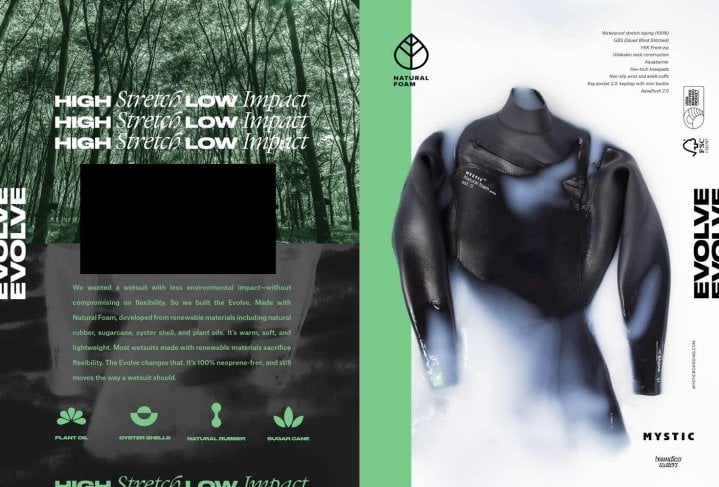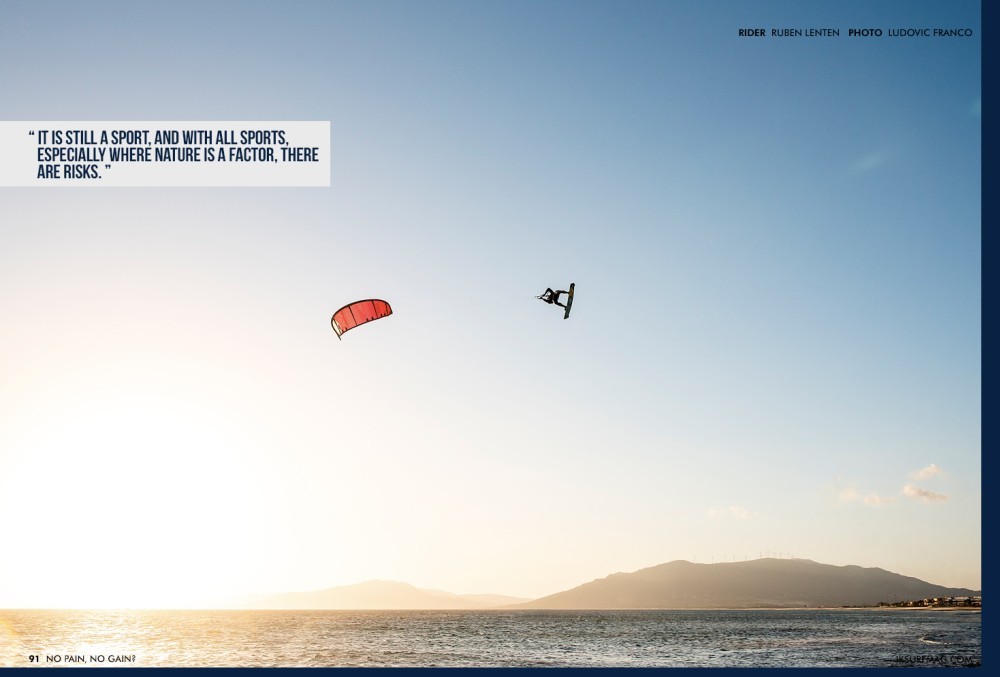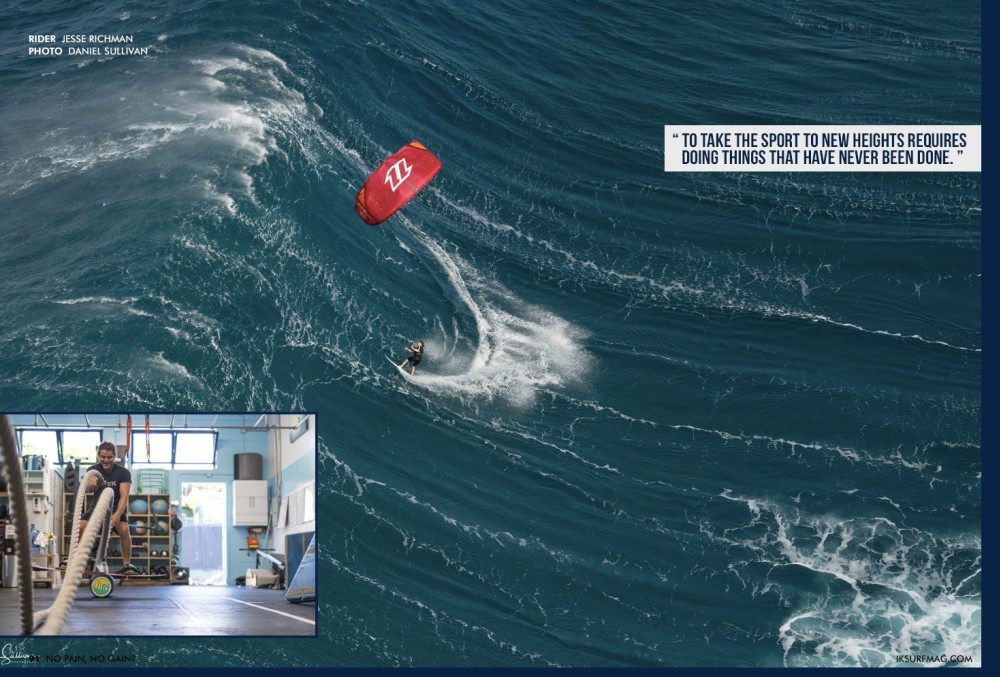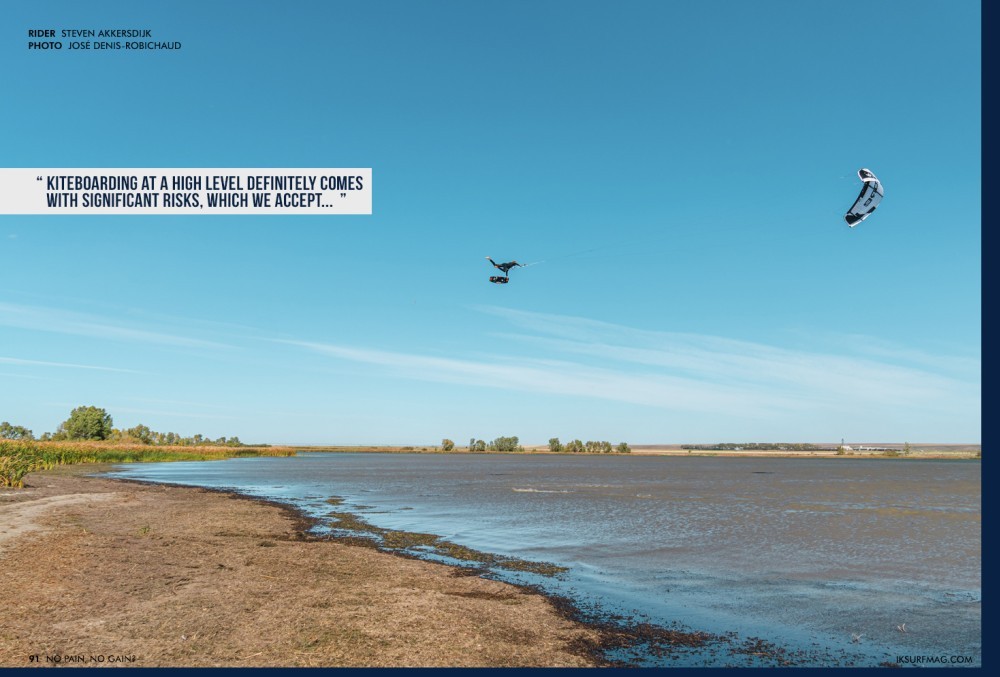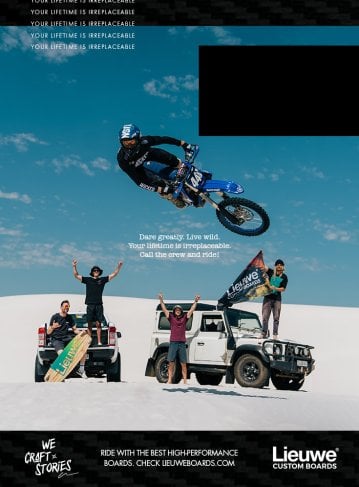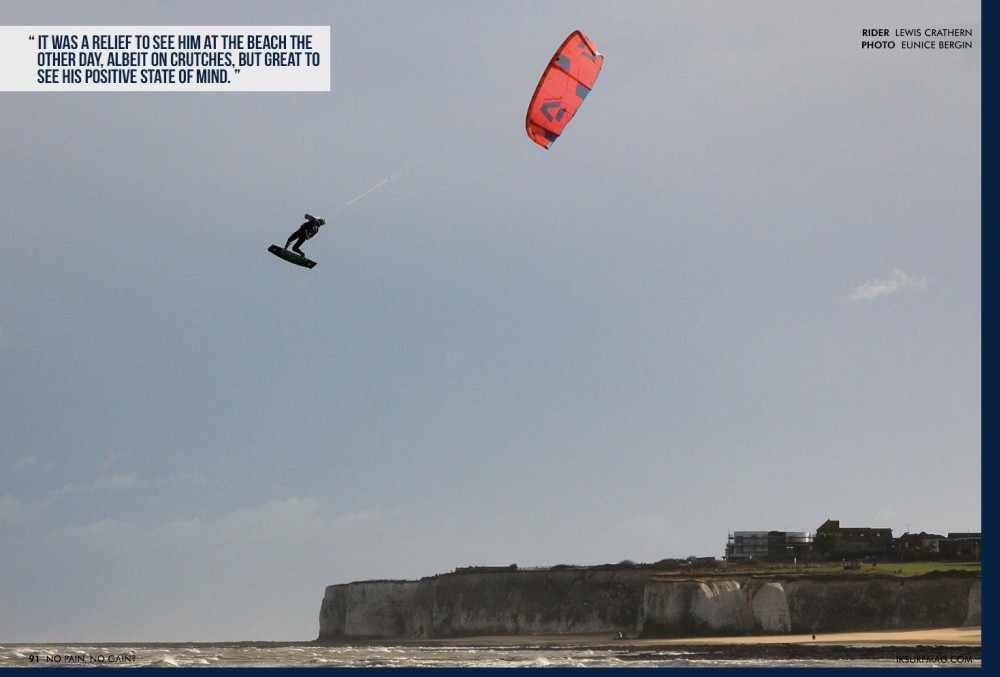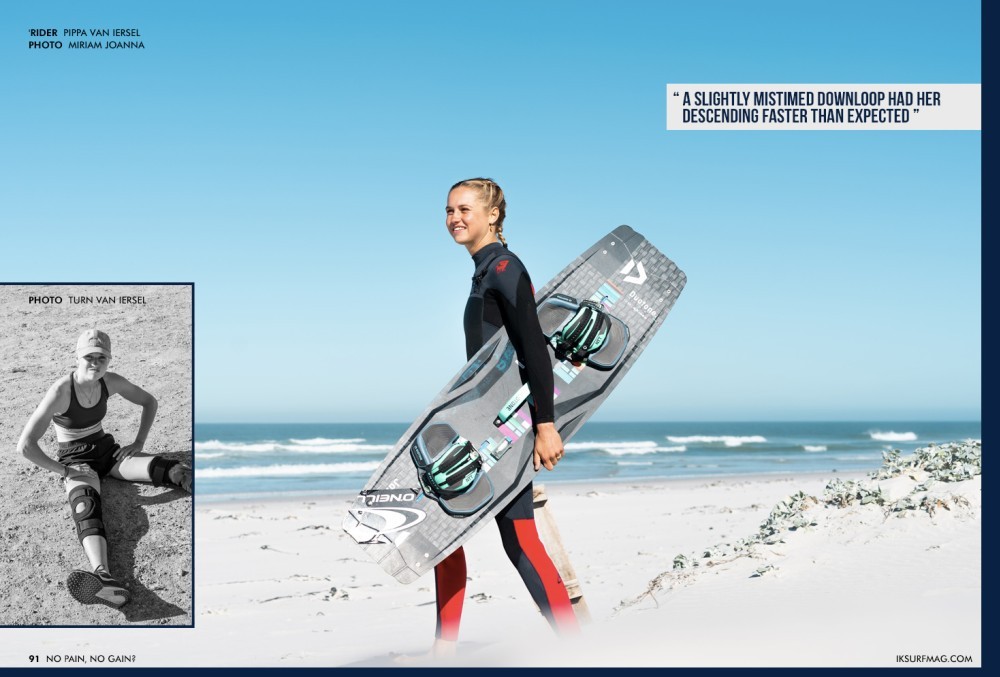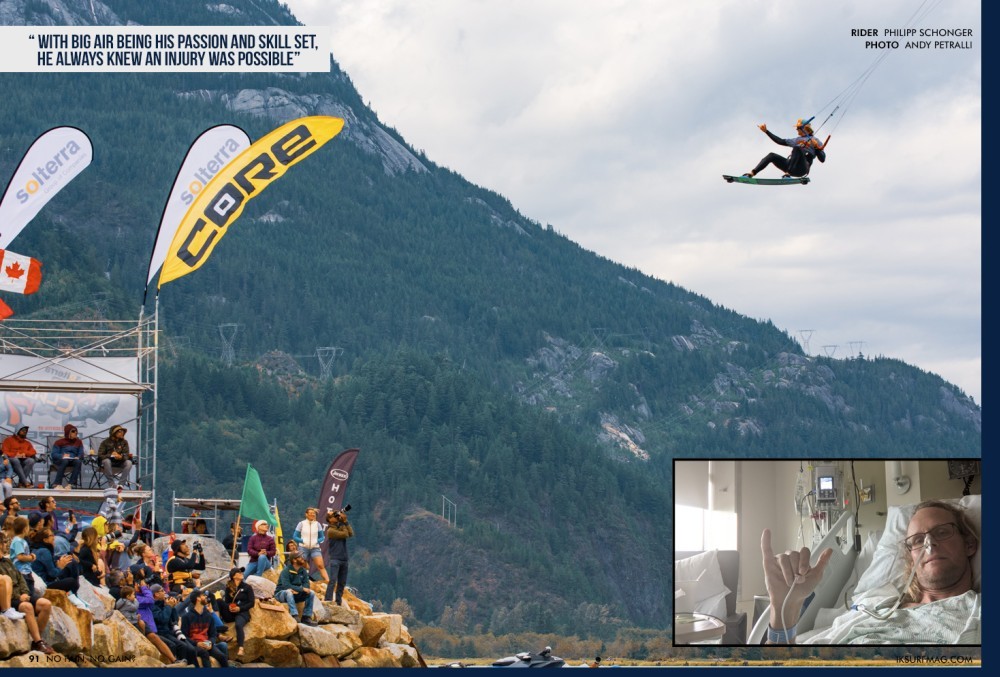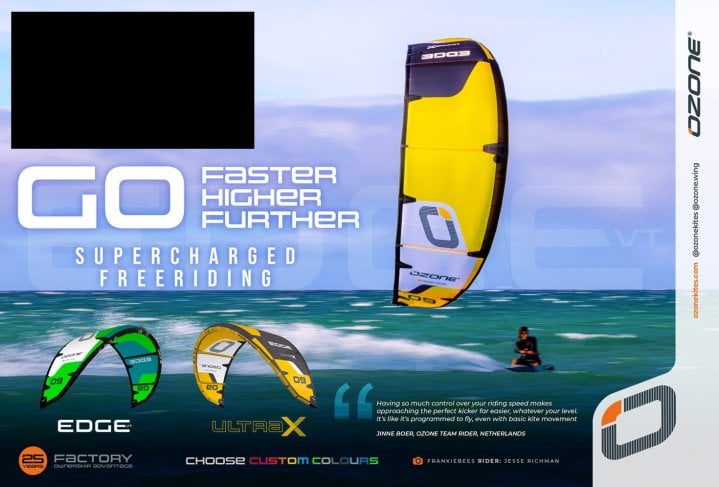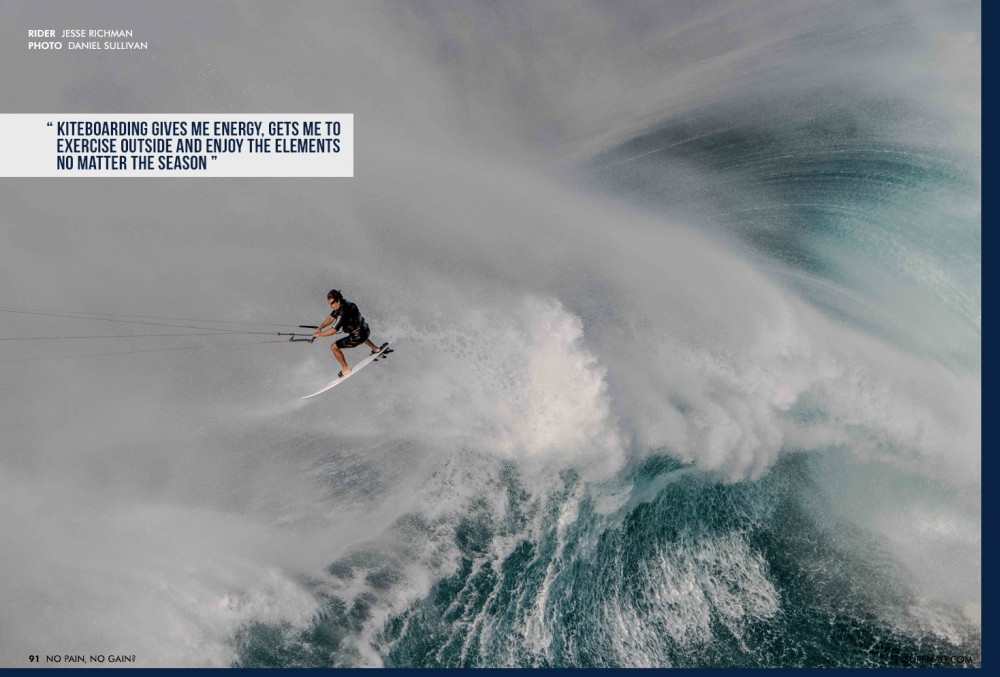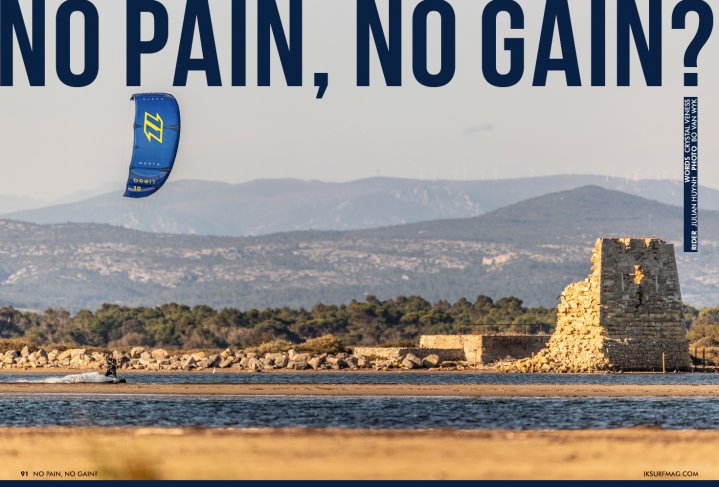
No Pain, No Gain?
Issue 91 / Mon 7th Feb, 2022
Being a top-level athlete in any sport comes with significant risk; kiting is no different. The road to achieving kitesurfing glory can be bumpy, but is the risk worth the reward? We speak to international pros and average Joe's to get their perspectives. You won’t want to miss what they had to say!
They say kitesurfing is an extreme sport. Many of us would be inclined to disagree with that statement, choosing to avoid significant risks while enjoying this fantastic sport. If you're safety-focused and follow a slow-and-steady progression path, for many kiters, the most painful injury they've experienced is a water-logged face and a bruised ego.
However, it is still a sport, and with all sports, especially where nature is a factor, there are risks. For professional kiters and hobbyists alike, there is some possibility of injury in every session. Yet we - and I will assume that you, dear reader, are an average, everyday kiter like myself - are more likely to twist an ankle walking down to the beach to set up our gear than Jesse Richman is to get injured while doing a megaloop.
Top-level kiters have that innate kite control that we - allow me once again to make an assumption about your riding level - can only dream of achieving. For these legends, flying a kite is like breathing. Going for a session is akin to a casual stroll to the mailbox. If an unexpectedly strong gust of wind or a rogue wave hits, it's but a sneeze. Kiting is, for the well-trained few, second nature.
And yet, we often look to these riders for inspiration. They, after all, make it look so easy. So, with some encouragement from our friends and confidence bolstered by the incredible lift and power and reliability of our equipment, we send it, fully believing that we will succeed. Oh, how optimistic we are!
My worst kiting injury happened while learning front rolls in the Outer Banks. It was a simple classic, the one foot in, one foot out boogaloo, resulting in two fractured metatarsals and five weeks in a moon boot. Worst yet, trying to look cool (that was my first mistake) at the cable park, I was rewarded with a fractured tibia and six weeks away from my kiteboard. My risk tolerance has never been the same.
While internationally sponsored kitesurfers, with their incredible control and a wealth of experience, are much more insulated to injury than we are, they are not immune. To take the sport to new heights requires doing things that have never been done. Standing on top of a big air or freestyle podium requires proving you're the best in the world against others that are similarly qualified. To win, you need to push, and to push, leaves you exposed.
With his most significant injury to date, a badly broken leg in the heavy waves of Ho'okipa, we wondered how Jesse Richman approaches risk. He says, "Life is an exciting, wild, and dangerous ride; one can get seriously hurt doing just about anything. However, there is an increased risk when going out into extreme conditions or performing advanced manoeuvres kiteboarding. I don't mind taking risks when I feel prepared. I always do everything I can to assess and manage risk. I utilise a military special forces training style, where one trains for every possible scenario and is as prepared as possible for any outcome. I constantly adapt and modify my plan throughout any risk-filled adventure, continually readjusting to stay on the path of highest success and be ready with a backup plan if the shit hits the fan."
Ruben Lenten, whose latest injury shattered his ankle into more than twenty pieces, is finally getting back on the board after two years and three surgeries. For him, "Kiteboarding at a high level definitely comes with significant risks, which we accept... Risk is something that grows on you; you become more aware of it as more things happen or if there's more on the line to lose. These can be injuries, sponsor deals, competitions or family, for example. You'll start becoming more aware of your goals, and that's when you weigh out risk vs reward more often."
Still, we can't resist the urge to send it that little bit harder because it just feels so good. Every year, as the Cape Doctor delivers strong winds to South Africa's famous Blouberg beachfront, annual trips to the emergency room rise. At this moment, a few of my good friends are sitting with their legs elevated and a long road to recovery ahead.
Up-and-coming big air kiter, Julian Huynh, who is pursuing a career in kitesurfing, has a fractured tibia and fibula after an incredibly unlucky injury that occurred while taking off for a jump when the lip of a wave smashed into his leg. After surgery and some new hardware in his leg, he is getting ready to head home to France, where he will continue his recovery over the next four months.
Amanda Rootman, a passionate kiter who works in kite industry sales and distribution, is an avid wave rider who has been kiting for 14 years. Her first major injury happened last month while attempting a kite loop on a twin tip. She landed with the dreaded one foot out, bending her ankle and breaking her lower leg bone. As she put it, "I tried something out of my comfort zone... and basically ran out of talent trying something new!"
Henk, an athletic guy who simply kites because he loves it, crashed while landing a jump and ended up with the worst injury he's experienced in his very active life: a dislocated ankle, torn membrane and ligaments, and a broken fibula and tibia. It was a relief to see him at the beach the other day, albeit on crutches, but great to see his positive state of mind.
I had to ask, is the risk worth the reward? Henk says, "Most definitely. Most adrenaline-filled sports come with the element of risk, and that is worth taking, right?" Amanda adds, "Learning to kite was a life changer and having access to a sport that provides as much stoke as kiting does is literally a blessing. The reward FAR outweighs the risk." And Julian, less than a week after his surgery, says, "I will still continue to go in the water and to push myself; kitesurfing is an extreme sport, and we need to all be aware of it."
On the competitive side of the sport, Steven Akkersdijk has taken his fair share of hits. He says, "I'm very conscious about the risks, especially with big air. All of this goes out of the window when riding a competition, though; the adrenaline is pumping, and you know there is a safety crew on the beach. Somehow, it's like flipping a switch and thinking about the consequences later."
Having had two injuries of note, a crash during the Red Bull Megaloop Challenge and an incident foiling in the waves that took a good six months to recover from, Akkersdijk remains confident that kiting is a low risk endeavor, adding, "Both of my injuries were the direct result of a stupid mistake and bad luck, making it something I'm not too worried about happening again... As I mostly ride within my comfort zone and only take small and controlled steps outside, I don't see a lot of risk in kiteboarding."
With one of the most widely seen injuries to occur in a kitesurfing competition, Lewis Crathern provides some insight into his 2016 King of the Air crash. "I remember riding well and feeling like the gods had finally delivered a 35 knot + KOTA. It was the semi-final and on my first run out, I saw yet another great kicker. It ever so slightly closed on me and rotated me 90 degrees on the way up, effectively backwards on and upside down. I sent the kite round and committed to a backroll but never fully made it around. I battled to get out of a strange backwards position, and that was that. Nine days later, I woke up from an induced coma in hospital."
Reflecting on the accident, Crathern says, "After seeing the video of what happened, it was clear I had partially lost my airborne spatial awareness. This, for me, has to be the biggest fear of all big air riders. When we are so high up and sometimes moving so fast through the air, it's something that you can simply never allow to happen." While there were no broken bones to heal, the injury resulted in so much physical trauma it took more than a year for him to get back to where he was. Is it worth it? "100%!"
Pippa van Iersel, 22-years-old, has been travelling the world as one of the top riders on Duotone's pro team. On a typical windy day in Cape Town, she took off on a wave a bit out of control. A slightly mistimed downloop had her descending faster than expected, partially tearing the ACL on both knees and bruising her bones. She admitted, "In the beginning, everyone told me: "you're gonna get stronger from this, and you will be fine". At that point, I also didn't know what was wrong with my knees yet and only thought: "how would you know?!" It took me a couple of days to let it all sink in, and I started to not wake up or fall asleep in tears. Because yes, I had fear and for sure was scared I was out of the game for a long time, not being able to do what I love most for a while."
She was lucky to avoid surgery, but her recovery plan includes a few months of walking in braces and avoiding any impact. However, she remains positive, "Once you get a clear view of what the damage is and know what you're facing, you start to make a recovery plan and do everything to get back as strong as possible." Asked her thoughts on risk, she said, "I would never want to change the life I'm living right now. The risk of injury is part of it and makes me the person I am today."
One of the most significant injuries I've ever seen happened to Philipp Schonger, a 43-year-old big air kiter from Seattle. He has made such an impression on the kiting community that he has earned himself a spot on the Naish team, even whilst having a full-time career in an unrelated industry. With big air being his passion and skill set, he always knew an injury was possible, but when his number came up, after a failed megaloop and several cartwheels through the water of the Hood River, it didn't happen how he expected.
After three visits to the ER, he got the bad news from the surgeon, "It's what I was afraid of; it's a worst-case scenario. Looks like you have a rupture in your intestine. We need to perform an emergency surgery now." He had major surgery and spent a week in hospital, leaving with a 9" incision and 58 staples up and down his body. Schonger said, "I never thought I would have the type of injury I sustained. I always thought it would be a broken leg, knee or another broken rib, but not a ruptured intestine that could have killed me."
How does one come back from an injury like that? I was sure, given his experience, that Schonger would be shy to return to the water. Instead, he made this powerful statement: "Kiteboarding doesn't have to be very dangerous. There's always risk, of course, but there's a risk I get hurt every time I get out of bed, go for a walk or drive my car. Kiteboarding gives me energy, gets me to exercise outside and enjoy the elements no matter the season and allows me to share my passion with my friends and the community. It helps me disconnect from the day to day challenges, feel the freedom and allows me to fly like a bird, an incredible feeling. Every time I look outside and see the trees move, I still get excited and get that amazing feeling that has kept me loving this sport for so long. I have travelled to far and remote places exploring all corners of the planet that I wouldn't have looked for if it wasn't for kiteboarding. Kiteboarding has given me so much for so many years. While I will be more conservative going forward in doing any extreme moves at extreme heights, I am still planning on going to "Send it!" when my body is ready and the conditions align!"
Jesse Richman has wholeheartedly accepted the risk, "I honestly would rather live an exciting life than one in fear. I do everything to stay healthy and injury-free. I know that sometimes I miscalculate, and that's just part of life. A failure is only a failure if you stay down."
Ruben Lenten is sure, "If you follow your heart to realise your dreams and you believe in yourself, it's always worth it. It's not despite my biggest challenges but because of my biggest challenges that I have everything that I deeply care about in life."
Rou Chater took a close look at the dangers of kiteboarding in THIS 2020 article, referring to a Dutch study that followed 194 kiters, eventually determining that "The injury rate of kitesurfing is in the range of other popular (contact) sports. Most injuries are relatively mild, although kitesurfing has the potential to cause serious injuries." So, yes, it’s true that kiteboarding has an element of risk, but studies have shown that it is essentially as dangerous as you want it to be. Kitesurfing is as safe as it has ever been, and, while safety is never guaranteed, a risk-averse kiter can go through their entire kiting life without a single injury.
When I started reaching out to different athletes and asking friends about their own painful encounters, I wasn't sure what the outcome of this article would be. I admit that I didn't think that there would be such a resounding consensus, and am humbled and inspired by the great love that we all have for our sport; from the casual kiter to the top riders in the world, the answer is clear. It's worth it. Kiting is risky. Injuries will happen. It will hurt. We will learn. But it is worth it.
By Crystal Veness
Editor at IKSURFMAG, Crystal Veness hails from Canada but is based in South Africa. When she isn't busy kitesurfing or reporting on the latest industry news for the mag, she is kicking back somewhere at a windy kite beach or working on creative media projects.



